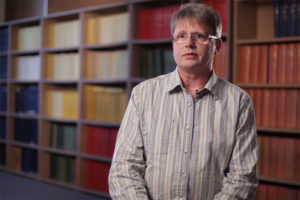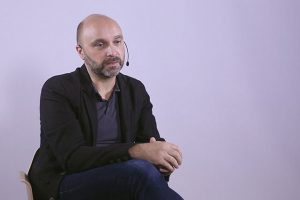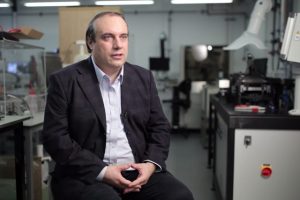Metamaterials
Physicist Martin McCall on artificial materials, control over the magnetic response, and perfect lenses
How can a magnetic field be simulated using lasers? Why is using ultracold atoms crucial for quantum simulation? What is the difference between quantum simulation and quantum computation? These and other questions are answered by John D. MacArthur Professor of physics at MIT Wolfgang Ketterle.
Quantum simulation means that we simulate the behavior of one quantum system with another quantum system. In other words, if there is one quantum system, which may be complicated to prepare or certain things happen there on a microscopic scale, if I can create another quantum system where on a whole different scale the same equations apply, then the same equations have the same solution. That means, this system behaves like the other system and I can study the first system by deeply analyzing the second one. This is meant by quantum simulation ‒ creating a quantum system with the same properties as the system you are interested in, but which is easier to manipulate and study.
In one of my labs, we’ve started to study what would happen to electrons in very high magnetic fields. I am talking about magnetic fields, which are 10 or 100 times stronger than the strongest magnets on Earth. So, we want to understand what would happen to electrons in such magnetic fields, which cannot yet be produced because of technical limitations. What we are doing is, we are using ultracold atoms and then we are shining laser-light on them, and the laser-light makes the atoms move around exactly in the same way as electrons move in a strong magnetic field. So, using laser-light we are implementing the equations of motion for electrons in a high magnetic field. Now we have a system of ultracold atoms behaving in the same way as electrons in magnetic fields, which cannot be realized in a laboratory. Such quantum simulator is actually simulating a form of matter not yet existing on Earth because we don’t have the magnetic fields to produce it.
What is the difference between quantum simulation and quantum computation? They have something in common but there are also differences. In quantum computation, you have, for instance, several ions and each ion forms a qubit. In order to perform a quantum computation, you have to control the quantum state of each individual part of your quantum computer; you want each qubit to perform quantum operations in a programmable way. In a quantum simulation, this is not necessary. We just throw many atoms – you can call them ‘qubits’ – together, but then they interact with each other through the natural forces. In other words, in a quantum simulator we pick the atoms in such a way that they interact with each other the way we want them to interact, without individually programming them. It is more of a ‘top-down’ approach that we use many atoms and make sure they interact and do their thing. In a quantum computer, it’s a more ‘bottom-up’ approach – you take atom by atom, program each atom and then with a quantum algorithm you get those atoms to perform the quantum computation you want them to do.

Physicist Martin McCall on artificial materials, control over the magnetic response, and perfect lenses

Neuroscientist Sylvain Baillet on CT scanning, the way MRI works, and other techniques that revolutionized med...

Nanotechnologist Andrea Ferrari on inelastic light scattering, Hall bars, and Cambridge Nanosystems